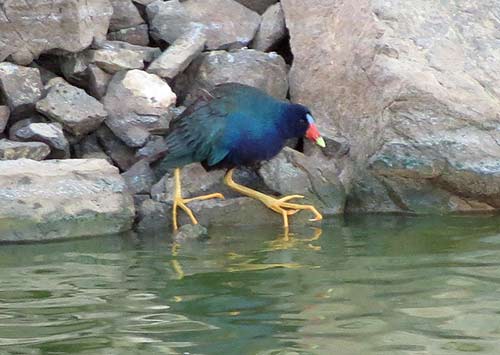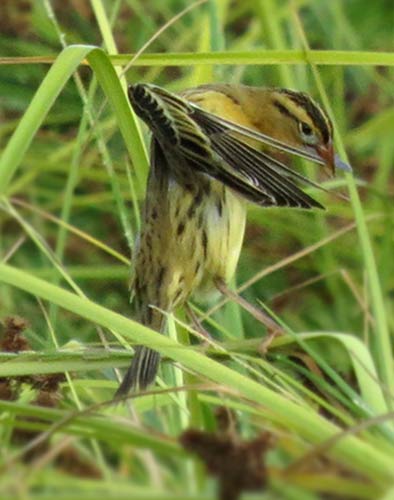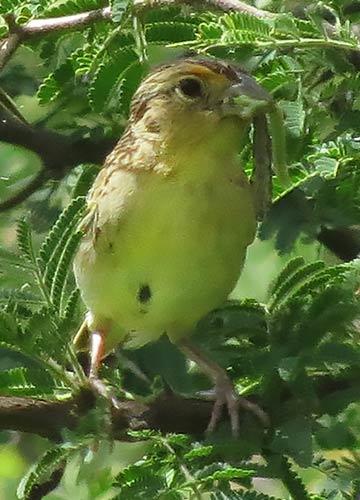Birders Seek Legal Protection for Bonaire’s Freshwater Wetlands
Over 60% of the island’s bird species have been found in Bonaire’s freshwater wetlands.
Posted November 27, 2020
Bonaire’s freshwater wetlands, at the LVV environs, are important
for resident birds, as well as migratory and vagrant birds.
Bonaire has a number of important nature reserves and the majority of them enjoy legal protection. However, this does not apply to the one area, the LVV environs–Bonaire’s freshwater wetlands–which host the highest amount of observed bird species.
Bonaire’s freshwater wetlands.
A wastewater treatment plant was built in 2012 at the LVV location. A portion of the treated wastewater is pumped into a low-lying area behind the treatment facility, creating the only permanent freshwater ponds holding water throughout the year. As a result, this area has become a significant nature area, hosting the highest amount of observed bird species on Bonaire. It has truly become a magnet for birds, either residential or migratory. While most of Bonaire’s nature areas are protected, this area at LVV is not.
Over 60% of the island’s recorded bird species have been found at Bonaire’s freshwater wetlands.
So far, 238 species of birds have been observed, identified, and officially recorded on Bonaire. Despite the limited size of the freshwater wetlands at the LVV environs, more than 130 different bird species (over 60%) have been identified at the LVV just since 2012 (when wastewater treatment commenced), many more than in any other area of Bonaire.
Bonaire’s freshwater wetlands are imperative for local breeding species, as well as for birds that are migrating or spending the winter.
There are approximately fifty species of birds that breed on Bonaire. Of these, nine species breed exclusively, or nearly exclusively, in the freshwater wetlands. These are birds such as American Coots, Common and Purple Gallinules, and Black-bellied Whistling-Ducks.
In addition, Bonaire’s freshwater wetlands are an important stop for many species that travel from their breeding grounds in North America to their wintering grounds in South America, and vice versa. These birds, especially all kinds of songbirds, find enough food and rest at the freshwater wetlands to gain strength for the continuation of their long migrations. For instance, in October one can find large flocks of Bobolinks which feed in this area.
Each winter, numerous birds visiting from North America, especially ducks and waders, are also observed at Bonaire’s freshwater wetlands where they spend the winter. In the 2019/2020 winter season, a female Ring-necked Duck passed the winter on Bonaire at the freshwater wetlands. This is a very rare bird on the ABC islands.
Since 2016, fourteen “new” species have been identified on Bonaire. Half of these species were observed in this area of just one square kilometer. Some of these, such as the Crowned Slaty Flycatcher and White-winged Tern, were even new for the ABCs.
Relatively many of the other wanderers–nomadic or vagrant species that are only occasionally observed on Bonaire–have been found to be present in the LVV area.
Bonaire’s population of the Grasshopper Sparrow
The area of the LVV environs is of special significance for the survival of a unique bird, the subspecies caribaeus of the Grasshopper Sparrow (Ammodramus savannarum). This subspecies only occurs on Curaçao (where it is nearly extirpated) and in a very few locations on Bonaire. The largest population by far is located at the LVV site where it was estimated in a 2018 study that approximately 20 birds remained.
If for no other reason, the LVV area deserves adequate legal protection to ensure the continuation of this subspecies of the Grasshopper Sparrow.
Conservationists request legal protection due to the avian importance of the LVV and its environs.
I am very pleased to be a part of the initiative to garner legal protection for this very important bird area on Bonaire, collaborating on this project since July 2020.
Since then, a memorandum on the importance of the LVV and its environs has been presented to the relevant department of the OLB, the island’s governmental body. The memorandum also discussed the possibilities of the area as a tourism nature area for birdwatching. Appendices to the memorandum included a report of the findings of American scientists from their 2018 research on the Grasshopper Sparrow subspecies caribaeus on Bonaire and Curaçao, as well as an overview of all bird species identified to date in the LVV area.
It is my hope that this memorandum will result in the LVV environs being preserved as a valuable freshwater wetland, that the area will remain suitable as a nesting site for the rare Grasshopper Sparrow, and that it will receive the legal protection it deserves. We firmly believe that nature protection can be combined with the development of small-scale nature tourism activities.
Due to the great importance of this area for birds, it is necessary to grant this area a legally protected status.
About the author:
 Susan has been living on Bonaire for over 30 years. She is a certified bird guide, as well as a topside and underwater photographer. She is a 2016 graduate of the Caribbean Birding Trail Interpretive Guide Course conducted by BirdsCaribbean.
Susan has been living on Bonaire for over 30 years. She is a certified bird guide, as well as a topside and underwater photographer. She is a 2016 graduate of the Caribbean Birding Trail Interpretive Guide Course conducted by BirdsCaribbean.
Reach out to Susan
Contact Susan via email, Facebook Messenger, give Susan a call, or simply use the online form below.
If you have any questions in regard to your birding tour on Bonaire, feel free to contact Susan to get answers. She is always happy to elaborate on routes or best times for a tour based upon your own personal preferences. Tours can be tailored to your own interests, whether that be birds, photography, or both!
It is also recommended that you do some homework about Bonaire's birds before you visit. By knowing a little bit about the birds which might be encountered on tour, your enjoyment will be heightened! Be sure to check out these resources for Bonaire Birding. Reading the Bonaire Bird Blog will also accustom you to the birds that habitually are encountered on Bonaire.
Facebook Messenger
Get in touch via Facebook Messenger
Telephone
Get In Touch
Get in touch with Susan to check availability for the dates you are visiting Bonaire.
Consent: By using this form you agree with the storage and handling of your data by this website.








